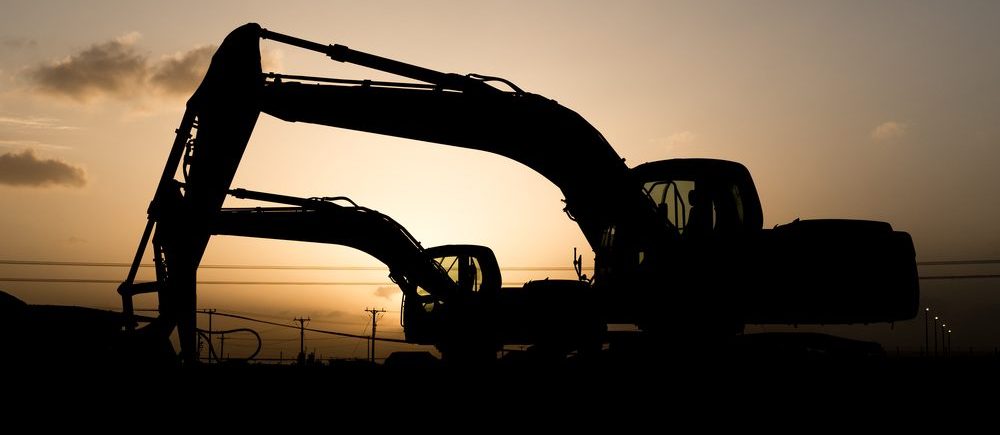Whether you have a construction fleet of five or 500, the key to keeping your company’s vehicles and heavy equipment operational is implementing an effective preventive maintenance program. The average cost for a piece of heavy equipment is over $20,000. Depending on how much heavy equipment your company owns, a large percentage of your company’s assets could be in construction vehicles and heavy equipment. Regardless of whether you outsource your construction equipment maintenance or do it in-house, a proper preventive maintenance program can extend the useful life of your equipment, prevent costly repairs and reduce downtime due to equipment being out of service.
Remember, proper construction equipment maintenance should apply to all of your construction heavy equipment as well as any road vehicles your company owns. You don’t want your excavator showing up late to a jobsite because the battery on the flatbed truck transporting it has died or your project manager being delayed because he was pulled over due to nonfunctioning brake lights.
The first step is to assign a dedicated person responsible for managing your preventive maintenance program. The old adage “If it ain’t broke, don’t fix it” should never be a part of your fleet manager’s vocabulary. Having a dedicated person managing your maintenance program means you can streamline your process by housing all pertinent information, such as repair schedules, telematics, owner’s manuals and parts availability, in a central location.
Once you’ve established someone to manage your preventive maintenance program you need to develop an individualized maintenance schedule for each make and model of vehicle or piece of heavy equipment in your fleet. Your maintenance schedule should never be pigeonholed to something as simple as the type of equipment. One reason for this is that older equipment will require more frequent maintenance than newer models. Another reason is that each manufacturer will have different recommendations for maintenance schedules.
For example, let’s say that your company owns three skid steers, two different models manufactured by Company A and one manufactured by Company B. Model 1 by Company A might recommend you change the engine oil every 100 hours operated while Model 2 by the same company might recommend the engine oil being changed every 250 hours operated. Now let’s say that the skid steer from Company B was manufactured the same year as Model 2 from Company A. Company B suggests you change the engine oil for every 200 hours operated. Based on this example we have three very similar pieces of equipment and each has different scheduled maintenance recommendations.
Consult the manufacturer’s owner’s manual first when creating a preventive maintenance program. They provide a baseline for establishing scheduled maintenance since they provide recommended service and maintenance intervals. Another great resource is your equipment operators, the people that utilize these machines on a regular basis.
Operators should be visually inspecting equipment before every use, ensuring oils and fluids are at correct levels, checking that tires, hoses and belts are in good condition and that all lights and indicators are properly working. Not only should they be reporting back on any issues from inspections like worn belts or low tire pressure but also on any anomalies encountered while operating the equipment such as the engine taking longer to start or slower hydraulic responses.
Another valuable source of information for your preventive maintenance program is from telematics. Simply put, telematics is the combination of wireless telecommunications with data processing. Most original equipment manufacturers (OEMs) of heavy equipment provide telematics through web-based applications.
Telematics technologies continue to evolve, providing more data points to equipment owners. Sensors and onboard scales are being incorporated into the design of new machines to capture and report on everything fuel consumption to fault codes.
Telematics data will allow you to schedule and perform preventive maintenance and repairs easier. Tracking engine and working hours can ensure you aren’t pulling equipment out of service too early or too late to perform preventive maintenance. It can also alert you when equipment isn’t operating at peak performance, which may be a sign that a component is failing and needs to be replaced. Identifying problems early can help extend the life of your equipment and reduce repair and labor costs.
Fluid analysis is another great tool for avoiding a catastrophic failure to a valuable piece of construction equipment in your fleet. By having your fluids analyzed at regular intervals keeps you updated on fluids that have longer drain cycles. Engine and gear oils, fuel, coolant, hydraulic and transmission fluids can all be analyzed to provide key information for the operation and maintenance of your construction equipment. Fluid analysis can alert you to abnormalities by detecting wear, oil degradation, contamination from bacteria and mold, mixed fluids and a host of other indicators that could damage your equipment.
Another component you shouldn’t be overlooked is routine cleaning of your equipment. The most common concerns are grease and dirt buildup which can damage your equipment. Grease hardens over time and can cause undue strain on your equipment from a decrease in lubricity. Dirt buildup can clog filters and decrease engine output causing power loss and increasing fuel consumption. Keeping your equipment clean also allows you to better detect leaks and rust damage.
It is also important to clean your road vehicles on a regular basis especially if they have your company logo plastered on the side. These vehicles serve as rolling billboards for your company and people will judge their perception of your company by the appearance of your fleet. I see at least a dozen different general contractor and subcontractor vehicles on my daily commute and I know which ones I wouldn’t contact if I ever needed their services based on the cleanliness of their company’s truck or van.
Ok, so once you’ve created and implemented a preventive maintenance program, what other steps can your fleet manager take to ensure your heavy equipment remains productive and you avoid costly repairs? One thing you can do is to make sure that only properly trained personnel operate your equipment. Overloading or overworking your equipment or using it to perform tasks that it wasn’t designed to do can damage your machinery and cause serious injuries to your workers.
You should also try and perform scheduled maintenance on your equipment around your construction schedule. It’s hard to start a new job if your entire fleet is being serviced at the same time. Have a contingency plan in the event of a catastrophic failure to avoid construction delays.
Even the best preventive maintenance program can’t prevent every piece of equipment from ever breaking down. By taking all these steps you can extend the life of your construction equipment increase your company’s productivity and profitability by avoiding costly repairs and replacements.
About Kendall Jones
Kendall Jones is the Editor in Chief at ConstructConnect. He has been writing about the construction industry for years, covering a wide range of topics from safety and technology to industry news and operating insights.


 Sign In
Sign In


